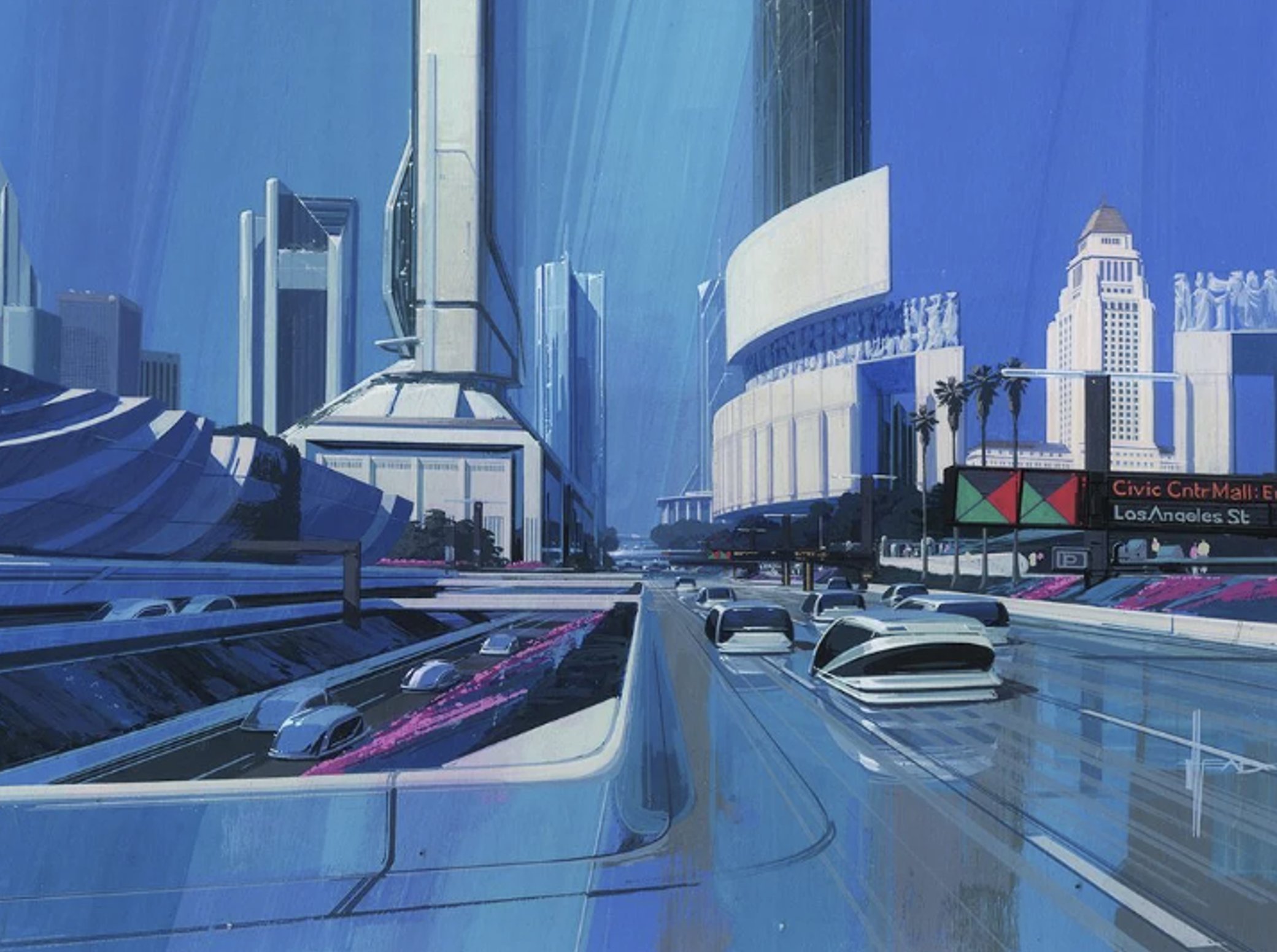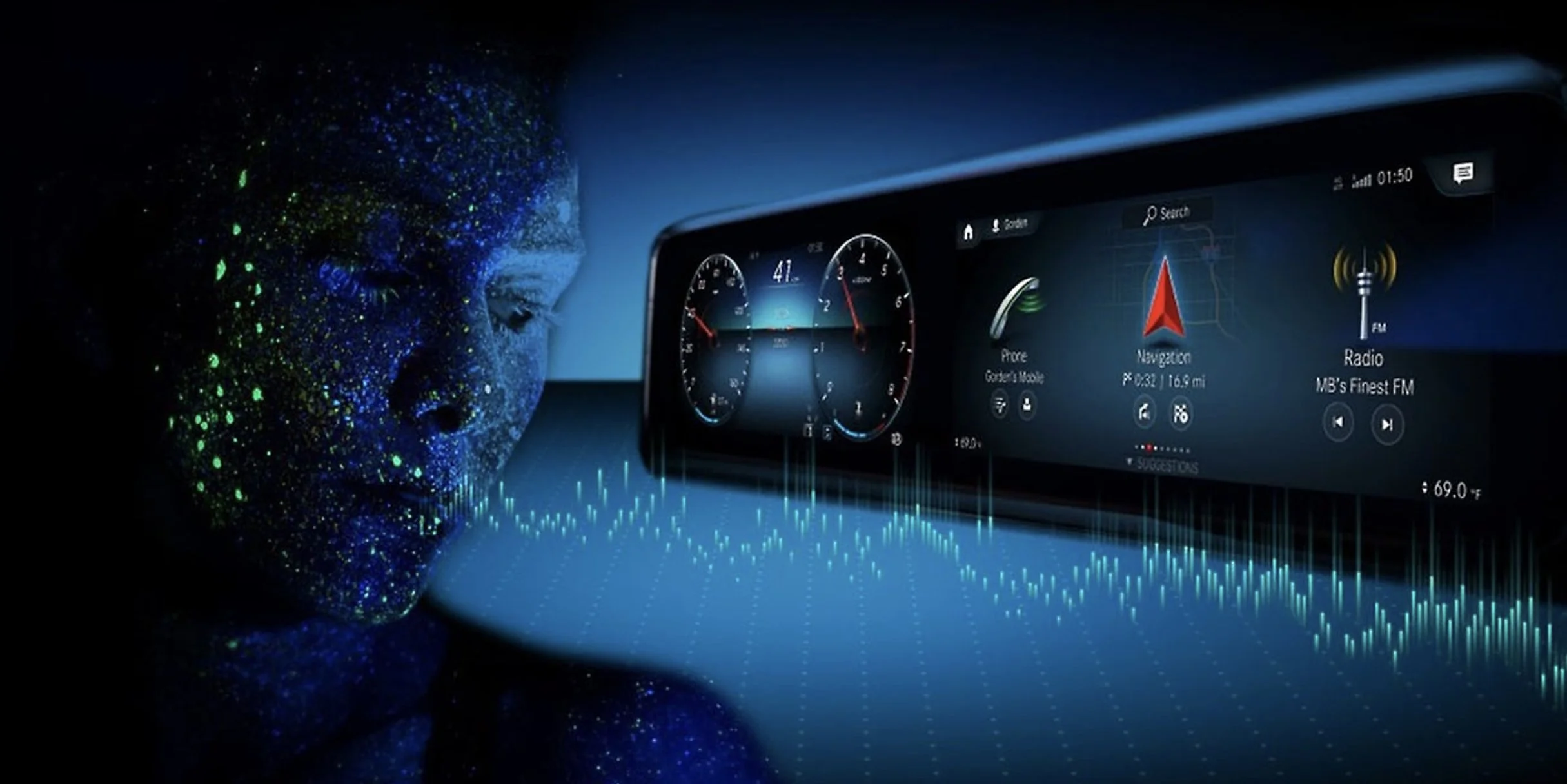The progress of automotive evolution and how it relates to human nature.
by Christian Delise
September 2023
By many accounts, the rise of Electric and Autonomous vehicles is already here. However, as we stand at the summit of this great leap forward, it’s worth questioning how effective this change actually is in reshaping the landscape of our world. Could we be straddling both technology stagnation and a new frontier of transportation lifestyles at the same time? How do we even judge the state of this automotive evolution and why is it so hard to predict these new shifts?
A crass metaphor involving frogs in boiling water comes to mind, but my wife is really not a fan of that one, so I shall give my best attempt at repurposing: as a society, we find ourselves driving down the road on a cold night, the view is pelted with icy snow, streaming past us like stars in a jump to hyperspace. The view is compromised on both the interior and exterior, but still manageable for driving. Before you know it, the windshield is completely fogged up, with a thin layer of ice building around the perimeter. You scramble for the defrost button. Thank God this model has a physical button to fire it up immediately. With a strong blast of hot air, the fog clears speedily in reverse pattern from which it appeared. You can see the road again, but even clearer than before, as now there is the right environmental balance restored within the cabin.
Our collective post modern futurist view of our environment has blurred our vision and clouded our perception of progress. As we are swept up in the instantaneous speed of the digital age, we have become so immersed in new technology before we have had the chance to realize how far it has brought us in only a brief manner of time. It’s only when we have become blind to the takeover, that the technology bites back, and we reach for other technology to solve the problem.
The modern era has spoiled us with technology attempting to improve nearly every aspect of life. Not only omnipresent, but also rapidly evolving. Our technological tolerance is peaking, we are less impressed and more demanding than ever as an overall species. And yet, our physical environment has only slightly evolved to show theatrical conveniences.
Utopia Not Found.
The truth is, we still move around at about the same pace. The average time needed to travel across town, much less across vast geographies, hasn’t changed much, and due to traffic has actually gotten worse. The layers of technology are visible, cars do feel like they have a digital safety net around us, we travel with relatively less emissions, even with Wi-Fi in many cases…however the overall experience is not life changing. The future I was shown as a child in illustrations of Syd Meade era were vastly new worlds dramatically reshaped by one element: vehicles. The changes were the result of higher speed and greater breadth of use. Traveling living room shuttles, elevated lanes of traffic for switching from driving to flying mode, mass luxurious mobility available to all.
We are capable of so much more. In the sense of speed, the stealthy blur of progress is captured with ever improving cannonball records- showing how far the technology team of human and machine has come in a race against time itself. In mass mobility, we have driverless cabs operating in several cities. We even have progress in emerging vtol , a new acronym which essentially stands for making helicopters with car-like attributes. This only proves that there’s a spectrum of change between what’s possible and what’s practical to implement for all. As a designer, futurist, inventor, I am a relentless optimist that we can avoid dystopia by having a better understanding of the history of technology in order to achieve more widespread future.
Automatic Adoption Assumption.
Many in the mobility space fear misjudging this adoption rate as they have in the past. As time passes, it's easy to count ourselves sudden futurist historians - hindsight is 20/20. The most commonly misplaced reference point is the ‘iPhone moment’. Because the iPhone had such an absolute change on the rhythm and habits of our daily life, we use it as justification for our beliefs in how that type of change is inevitable in every other space all the time. We have been preconditioned to not only expect but assume that innovation is a given. The reality is while innovation is inevitable, the distribution is far from easy.
In the last 10 years, every single auto maker has participated in an adapt or die technology arms race. The fruits of those efforts can be seen in the product lines – there is an electric vehicle at every single price point and model segment. It is also possible in certain controlled environments to experience a fully autonomous taxi, or a copilot system, helping early adopters drive with a second pair of eyes.
We cannot say, however, that this tech has had the official iPhone moment where everyone you know can’t live without it. There is also misinterpretation between what is possible and what actually moves the needle. New technology is not always an automatic adoption, the only safe prediction we can make is that the rate is unpredictable.
Human Culture Factors.
Cars are an easy fascination to explain. We identify with their looks, they have faces, hips and rear ends. They need to be fed, overseen, and maintained to remain healthy. They embody a living thing that is part of our household more than any other product. We put our family members inside of them, trusting them with our lives. We create moments and memories in their climate controlled, ambient lit, multimedia streamed environment.
In a prior role I held at one of the innovation labs within the VWGroup, we were coming up with new ways for engineering to relate advanced driver assistance systems to the distinct automotive user experience of each of the brands- we would be presenting in a room of several dozen engineers of varying disciplines, we would ask the room, “How many of you have ever named a laptop or a phone…crickets, maybe a few cautious hands from some video game programmers in the back. How many of you have ever named a car?” The response was never less than the majority of the room. Even the most anti-car person can relate to a time when they referenced a car as a family member or living entity.
Much like the windshield fogging over, an addiction of tech dependency happens slowly. We are predictable creatures, once we see something we like, our fixation is often instant. When you give an iPad to a person for the first time, or a toddler, for that matter, it's not dissimilar to a teenager after their first experience with the devil's lettuce. However over time, one develops the tolerance to consume in more social situations, with less shock. This is all to say, without urgency for new levels of automotive change, we lose perspective, for us to have a fresh perspective we must step back and re-examine how to link that shift to culture.
Innovation Theater.
To the delight of designers everywhere, we have been enjoying a true renaissance of innovation theater. Perceived quality metrics are off the chart, and we have been inundated with new levels of industrial tech craftsmanship the likes of which we haven’t seen since an early nineties dream car stage. I was a part of this wave. After the 2008 crisis, the early 2010s showed opportunity to display an industry comeback. Stitching appeared everywhere, seats were getting extravagant treatments, and dashboards became a playground of lighting, LCD screens, and piano black- to make thing was overThis time, many of the tricks have made it to production. And yet, the way we assemble and distribute them remains much the same as it has for the last century. Even new manufacturing techniques change the fact that they are making a depreciating asset, rather they are making cars even more vulnerable to accelerated obsolescence, in the least sustainable way.
In the words of a certain South African who has become infamous for leading the charge to EVs and Fake Self Driving, “Fate does in fact, love irony” the push for cheap, disposable electric transportation is actually the least sustainable thing we can do when thinking of long term solutions. We will inevitably be at yet another crossroads in the future of transportation, and the growing pains of this current shift to electric will start all over again with a new wave of transition.
With electric cars, we are not witnessing the great transformation from horse and buggy to the motorcar that is often historically referenced. Electrification merely changes their diet, and autonomy merely replaces the person in the saddle. Cars have elevated their existence to that of a living herd among us. Like it or not, we have built our cities, delivery of goods, and societies around the conveniences, and things like physics or geography are not going to change. We will continue to need little metal sculptures to swiftly and safely carry us around well into the foreseeable.
Electric drivetrains on their own are therefore not a clear cut silver bullet to the larger challenges of making said vehicles adaptable to new tech as it comes online. As tempting as it may be to make this a binary issue given that Electric Cars are inherently superior in many ways. The emergence of EV startups have ushered in healthy competition to an industry always tempted by complacency.
OEMs are in a reactionary era where they must find ways to survive on their existing methodologies, while investing billions in what they believe to now be expected. As major contributors to national GDPs of countries across the world, keeping cars rolling off production is an ethical issue as well.
It is not surprising that the EV / Autonomy revolution has become a cultural flashpoint. Energy independence and Freedom of movement are tenets which we must not sacrifice in the name of incremental efficiency mandates. Forced progress is not true progress. We must make conscious decisions to embrace new technology while offering ways for the consumer to democratically participate in a larger, updatable system which works in harmony with their desire for improved quality of life.
As I write this another setback has occurred in the Autonomous driving arena, where a vehicle made a poor choice which cost a young woman’s life to end somewhat brutally. My take on this is simple- all technology takes time to become safely implemented. The airplane, the elevator, the microwave. It does not mean that there is no place for it in the world. The danger comes from the futurists incentivized by failing fast and break things. This works if you are developing an app, but if your phone crashes, you’re not really endangering anyone.
Motor vehicles and the people around them carry a big responsibility. Real progress in these industries are jeopardized by those who don’t factor in the severity of the disruption they believe to be ‘inevitable’. I know because I was in the meetings at these big corporations in the mid 2010’s, when tech enabled grad students were confidently claiming how personal cars will disappear by 2020 because they will all be fully autonomous. This thinking, along with the fear and haste it perpetuated, drove much of the cost saving product decisions we now are seeing the effects from.
The ghost in the sheet metal.
We are living in an era of fast fashion car design, which I believe is coming to an end. As a society, we have grown apprehensive of the throw away mentality of new products. The next great change will not come from a hot new car model or sustainability pledge. We must continue to be creative with materials and connected car monetization opportunities while also investing in vehicles which remain relevant well into the future. The shift which will bring us to the new landscape we were all promised will come from a dramatic rethink of what a car can be when continued evolution is part of the design brief as well as the business operations model of brands. Engineering for sustainability is not about forcing today’s technology into high priced features or reducing quality to shove out cheaper products.
If we relate to cars as we do with living creatures, then we should apply similar principles to evolving their nature. Living beings have flaws, we have flaws, our purchasing decisions are swayed by emotion- and for the better. Among the best rated cars to own long term always present a certain combination of quirks and character traits, that we make the most use out of whatever costs or impacts incurred on this earth required to produce it. This is not to say we should engineer in flaws, but certainly be intentional about which parts of the car live on, and which parts change.
Contrary to the popular belief that cars are turning into laptops, I forecast that their role will span far beyond any electronic device in history. As cars grow smarter, more connected, and more complex, their soul will grow in significance, their cost to us even greater. The ghost in the sheet metal will force us all to reconsider them as long term investments, rather than recyclable throw away products. As their usage expands with autonomy, and their rarity increases, we will be compelled to expect more out them. Technology will continue to improve, and decades from now, our children will hope that we produced vehicles in anticipation of what improvements are yet to come. We need to honor the relationship we currently have with cars today while designing them to be able to integrate into the next level of transportation.







